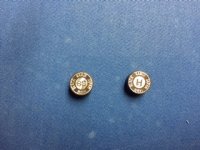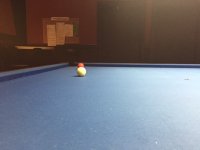I am well aware there is an entire lore surrounding this notion that a soft tip gets more action, gets higher spin-to-speed ratio---and that you can find the claim from amongst the best players in the room, the best players in AZ Billiards, pro players, experienced players...
I think this claim should enter the textbooks as a superb example of confirmation bias
http://skepdic.com/confirmbias.html
Aside from the subtle contact-time effect on the offset (a smaller effect than the claims), the claims are false.
The force that produces the speed and the force that produces the spin are the same force, and at a given offset any additional force increases the two in the same ratio. A soft tip acts slightly longer, but it's basically less force acting over a longer period, and the added-up result is the same.
So, you're saying that if a robot hit the cue ball with the exact same cue & with the exact same tip offset location & with the exact same force or speed of stroke the results would be exactly the same & if this were done on a billiard table the cue ball would stop in exactly the same spot on the table AND it would not matter at what height on the cue ball the offset is applied, high, center, or low or anywhere in between. Is that what you're saying?
There are shots designed to test the maximum spin-to-speed ratio, where you can get an actual top player trying to get maximum action using different tips--basically a slightly-off-angle draw shot where you are trying to hit a rail as far back as possible. I and others have done these empirical experiments, and the results have been consistent and agree with the expectations from the physical description.
These 'tests' are performed by humans & hence have subconscious influences & no guarantee that the ball is hit in the exact same spot with the exact same force. I'd venture to say that after a couple of hits, adjustments or modification would be made by a pro or any good player to get the desired outcome.
Sometimes you need to kill your baby.
I'm not killing MY 'baby'. It's too well nurtured & listens too well to his Daddy.


